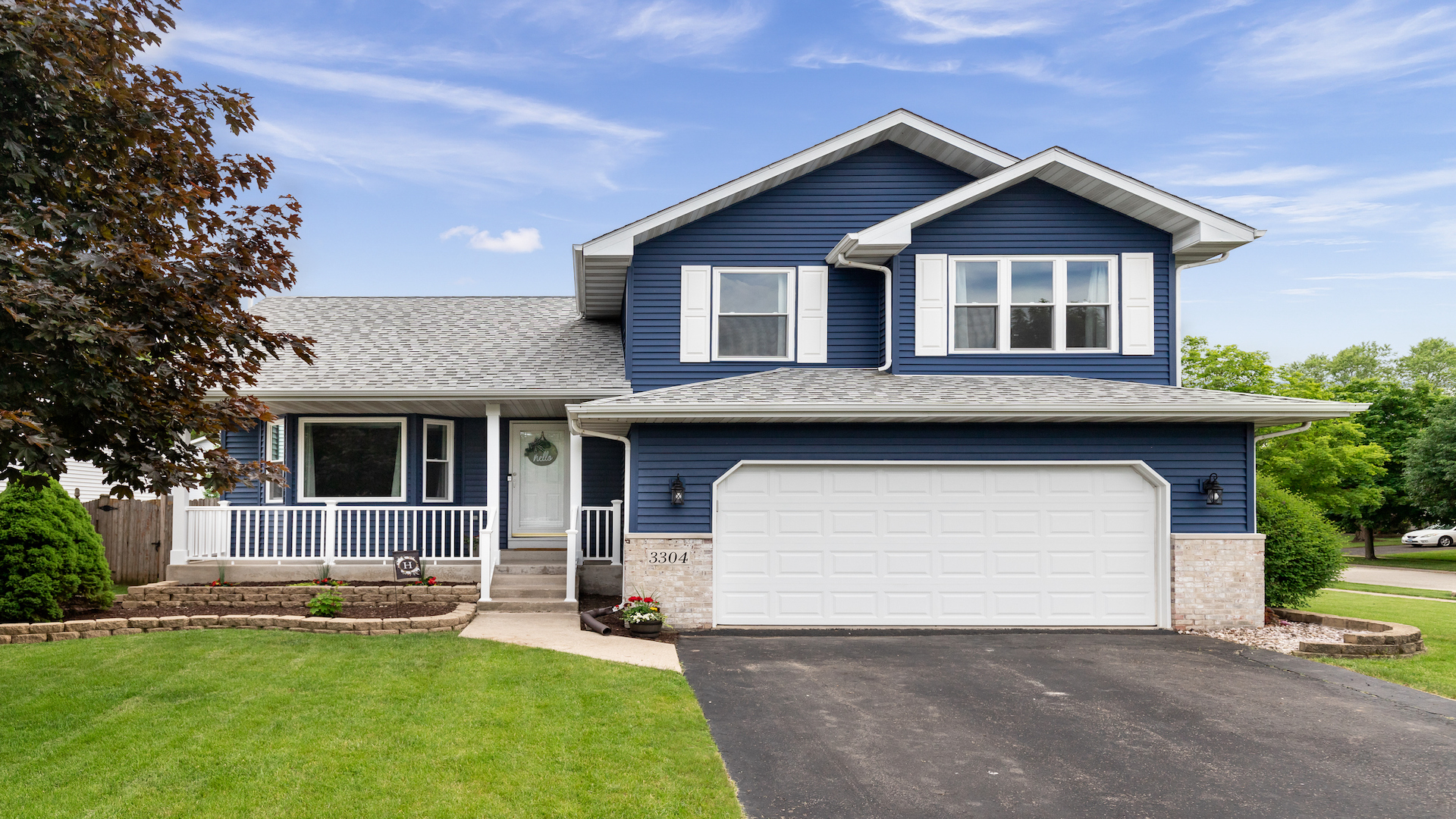
Do you need a home construction loan?
If you want to build a new home from scratch, you’re likely going to need a construction loan.
This is a short-term loan that can be used to finance land, materials, labor — in short, all the costs associated with building a home.
Construction loans come in a few different varieties. Some have to be paid off once the home is built, and some can be converted into a mortgage that you pay down over time.
The right type of construction loan for you will depend on your budget, your construction timeline, and how you plan to use the house once it’s built.
Verify your home loan eligibility (Oct 22nd, 2020)In this article (Skip to…)
- What is a construction loan?
- How construction loans work
- Construction loan types
- Steps to get a construction loan
- Construction loan vs. renovation loans
- Whys to finance home renovations
- Construction loan FAQ
Home construction loans explained
Unless you can pay out of pocket to build a new home, you’ll need a construction loan to finance the project.
Construction loans let you finance the materials and labor to build a house from scratch — as opposed to a traditional mortgage loan, which is only for completed homes.
A construction loan is a short-term loan — typically 12 to 18 months — that lends funds to be used for the materials and labor needed to construct the residence.
The money from this loan can also be used to purchase the lot on which the home will be built (or you can get a separate “lot loan” for that purpose).
Interest rates on construction loans are variable, meaning they can change throughout the loan term.
But in general, construction loan rates are typically around 1 percent higher than mortgage rates.
Verify your new rate (Oct 22nd, 2020)How construction loans work
With a construction loan, you typically don’t receive the full loan amount upfront. Instead, you receive the loan in installments to pay for the construction work in stages.
Michael Gevurtz, CEO of Bluebird Companies, explains how this works:
“First, you create an estimated budget for the entire project. Then, you make at least the minimum down payment required by the lender,” he says.
As the construction project progresses, you’re able to draw down on the loan money in phases to cover associated costs. Each “draw” pays the builder for that completed stage of construction.
“Typically, the work is completed, then you make a loan withdrawal request,” says Gevurtz.
“The lender sends an inspector out to examine the work and approve the request. Then, a portion of the loan can be wired or transferred to your bank account.”
Construction loan types
There are three main types of construction loans:
- A construction-to-permanent loan finances the construction costs as well as the finished home. It converts from an initial adjustable-rate construction loan to a fixed-rate, permanent mortgage loan once the work is complete
- A construction-only loan is a short-term adjustable-rate loan used only to complete the building of your home. Once that occurs, this loan either needs to be paid off in full or refinanced into a mortgage loan for permanent financing
- An owner-builder loan is for homeowners who also want to act as the general contractor for their own project. “These loans can be less expensive and offer lower rates than the other two options. But lenders often see them as a very high risk, so they may be harder to obtain,” says Gevurtz. You generally have to be a professional contractor to get one
As with a mortgage, you’ll want to explore all your financing options, and compare offers from a few different lenders.
The right type of construction loan for you will depend on your finances, your timeline, and who can offer you the best interest rate for your situation.
Steps to get a construction loan
It can be more difficult to qualify for a construction loan than a traditional mortgage.
“It will depend on your financial strength as a borrower, your plans and specs for the project, your project budget, and what you plan to do with the home once it’s finished,” explains Robert Withers of M1 Capital Corp.
Each lender has its own application process and requirements. But in general, you’ll have to provide detailed information about your:
- Income
- Employer
- Credit (scores usually need to be above 720)
- Down payment (you likely need at least 10%)
- Builder/general contractor
- Construction budget
At some point, you’ll need to have the property appraised and inspected, too.
Once the loan is approved, the loan will eventually close through a title company as a mortgage loan would.
Instead of getting a lump sum payout at closing, your borrowed funds are withdrawn upon request at each stage of the construction project.
“You should select a construction loan lender based on their experience in construction financing. Shop around carefully,” suggests Withers.
He cautions that finding and qualifying for a construction loan is particularly tricky these days due to the current economic downturn.
To help you find the best deal on home construction financing, it may be worth seeking out an experienced and reputable broker to help you compare loan options.
Construction loans vs. renovation loans
Construction loan funds can be used to pay for land, supplies, labor, and other costs related to building a home.
But what if you want to buy a fixer-upper home instead?
In this case, you’ll want to pursue a “rehab loan” instead of a construction loan. The funds from a rehabilitation or renovation loan can cover the expenses involved with repairing or remodeling an existing home.
One popular renovation loan is an FHA 203k rehab loan.
“This [loan] allows you to borrow funds to purchase the home as well as pay for desired or needed repairs or renovations,” says Paul Welden, director of The 203k Contractor Certification Program.
“FHA 203k loans cannot be used for new construction. And they can only be used on existing one- to four-unit properties that have been completed for a minimum of one year.”
Welden adds that an FHA 203k loan requires a minimum of 3.5 percent down — which is quite a bit less than the 10 to 20 percent required for a construction loan.
Similar to construction loans, interest rates for the FHA 203k can be up to one percentage point higher than for a traditional FHA mortgage loan.
Verify your renovation loan eligibility (Oct 22nd, 2020)Ways to finance renovations to an existing home
Construction loans exist to finance new home construction. Homeowners who want to renovate an existing home have other options, including:
- Home equity loans: These “second” mortgages tap your current home’s value so you can use it on renovation projects. If you have an existing mortgage already, you’ll make mortgage payments on both loans
- Home equity lines of credit: This loan, also called a HELOC, taps your equity, but you control when and how you take loan proceeds. You can draw a portion of the HELOC, or all of it, at closing. You only pay interest on the amount you draw. You can also repay it, and then re-use the loan for additional projects within a set time period.
- Cash-out refinance loans: You can replace your current home loan with a new loan that’s big enough to finance your home construction projects pay off your existing mortgage. The “cash-out” refers to the equity you can take from your existing home
All three of these options require you to have equity built up in your home. The amount of money you can withdraw depends on your current equity and your home’s value.
Unless you’re using a VA cash-out refinance you won’t be able to withdraw 100 percent of your equity.
Verify your renovation loan eligibility (Oct 22nd, 2020)Construction loan FAQ
Still have questions? Here are some quick answers, mainly provided by Gevurtz, to frequently asked questions about construction loans.
No, you cannot get a construction loan with nothing down. A borrower must have cash or equity available for a construction loan.
In addition to a detailed plan and a qualified, approved borrower, one also needs money for a down payment and proof of the ability to repay the loan. Like with a traditional mortgage, proof of your “ability to repay” will come in the form of credit reports, bank statements, W2s, and other documents verifying that you have sufficient, steady income to pay back the loan.
Due to the risk associated with construction-loans, they are more difficult to get than a mortgage.
When using a construction loan, there is an interest-reserve fund built into the total amount borrowed which is used to make interest payments during the build.
A minimum 10 percent down payment is typically recommended for a construction loan, though 20 percent is often preferable for lenders.
Private lenders and regional banks are often best for construction loans. They are suited for taking a bigger risk and able to provide more innovative solutions.
At the time of writing this, depending on the lender, 4.5 percent is a typical interest rate for construction loans. That’s about one percent higher than a typical rate for mortgage loans during the same time period.
You may need a higher credit score to get a construction loan than to get most mortgage loans. A FICO score of 720 or higher is recommended for credit approval.
The ideal debt-to-income ratio for a construction loan can vary, but should never exceed 45 percent.
Usually, it is cheaper to build than to buy a home. That’s because you can create something exactly to your specifications and desires typically under cost than what you would pay for purchasing an existing home.That said, it’s harder to qualify for a construction loan than a mortgage. For many people, it’s simply more realistic to buy an existing home — especially for first time home buyers.
A draw schedule is the plan that details how you will send funds to the builder. When building a home, you don’t send the entire loan disbursement to the builder before the project even starts. That’s asking for trouble. Rather, your lender will release funds slowly as each project milestone is completed. Foundation done? Some funds released. Framing done? More money to the builder. In this way, you minimize losses in the case of a dishonest builder, or one that simply goes out of business during your project.In this way, a construction loan resembles a line of credit. A “draw” is taken a portion at a time instead of in a lump sum.
Construction loans require closing costs just like traditional mortgage loans. Along with the processing and origination fees the mortgage lender charges, you’d also have to pay for an appraisal, title insurance, and legal fees. An advantage of construction-to-permanent financing is paying only one set of closing costs. With a construction-only loan, you’d pay closing costs twice: once on the construction loan and once on the permanent loan.
Yes, a mortgage lender will require private mortgage insurance on a construction loan if you put less than 20 percent down.
With a standard mortgage, the lender can use the existing home as collateral. With a construction loan, the new house doesn’t exist yet so it can’t be used to secure the loan. The real estate plot you purchase has value, but the loan amount will typically surpass the value of the real estate itself. Mortgage lenders reflect this added risk through higher interest rates.
Online banking has made getting a standard mortgage easier, but getting a construction loan usually requires more face-to-face interaction with a loan officer. To get approved you’d need to share the unique details of your new home project.
This depends on your individual needs, and a loan officer could help you decide.For many borrowers, a construction-only loan’s temporary financing can offer more flexibility. For example, when you’re ready for permanent financing you’d have more control of the long-term loan since it would be separate from the construction loan.However, a single construction-to-permanent loan could save money on closing costs.
What are today’s mortgage rates?
Interest rates remain near all-time lows for mortgages as well as other types of financing like construction loans.
But, as always, rates vary by person. So get a few quotes to see which lender can offer you the best deal.
Verify your new rate (Oct 22nd, 2020)


